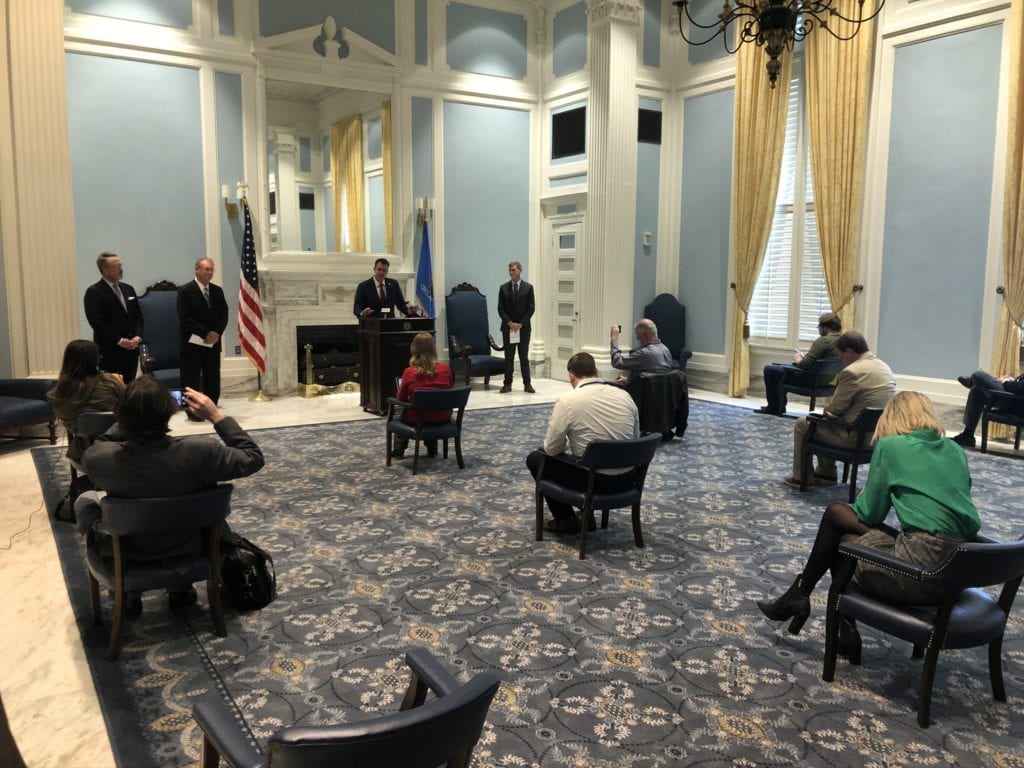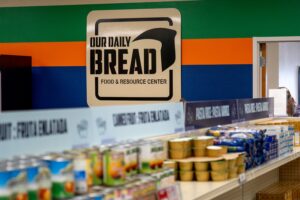On Tuesday, January 12, Governor Stitt held a press conference along with Health Commissioner Lance Frye, and Secretary of Education, Ryan Walters, urging Oklahoma schools to go back to in-classroom learning.
“We need to put our students first, and we need to get them back in class,” said Gov. Stitt. “Refusing to offer in-person school is jeopardizing our kids’ education; it’s jeopardizing teachers’ careers, and it’s jeopardizing the future of the State of Oklahoma. Today, we’re announcing a new policy that will help us keep schools open safely. It will also help encourage and reward mask-wearing in schools across the state. Moving forward, schools that enforce the use of masks will not have to quarantine students that were potentially exposed to COVID-19 unless they are showing symptoms.”
To justify the change, Stitt cited a study from the American Academy of Pediatrics. However, the Oklahoma chapter of the American Academy of Pediatrics, emphasized that they did not support the governor’s new policy, nor does the study Stitt referenced.
They stated: “The new guidance issued by the [Oklahoma State Department of Health] regarding school quarantine does not adhere with the recommendations of the AAP nor the CDC. The data referenced by Governor Stitt is based on a single study conducted in North Carolina in specific districts that strictly adhered to multiple mitigation strategies. This is not consistent with the current COVID-19 surge in Oklahoma.”
Furthermore, the Oklahoma chapter concluded: “In order to improve our current situation in Oklahoma, similar community measures that were used in North Carolina are needed, such as a statewide mask mandate, continued social distancing, limitations on indoor gatherings, and required mitigation strategies in schools.”
Dr. Daniel Kelly Benjamin, the senior author of the study cited by the governor, said “What is key, is that there is 99% mask compliance for every person in the mainstream curriculum that steps on school property. It’s the mitigation strategies, distancing, masking, hand hygiene that are crucially important. If a school district does not do these things, they will likely make the pandemic worse by being open.”
In a statement to the press, Kary Webber, Executive Vice President of the Oklahoma AAP chapter, said: “Medical professionals caution that these results need to be interpreted in the context of the study conditions and point out that the low transmission rates highlighted resulted from multiple mitigation factors, many of which are not in place in Oklahoma.”
Webber stressed that the recommendation announced at the Tuesday press conference was not issued by the AAP. “It doesn’t follow the CDC guidelines, it doesn’t follow our AAP guidelines, it’s completely different than the recommendation we have.”
Dr. Dwight Sublett, president of the Oklahoma AAP chapter, stated: “If we are serious about in-person learning, we must be committed to embracing the same level of mitigation efforts as those highlighted in this study. We encourage schools to adopt strong prevention guidance and confer with county health departments for the safety of teachers and families.
Dr. George Monks, president of the Oklahoma State Medical Association said: “We all want our kids back in school; however, we must do so safely.”
State School Superintendent Joy Hofmeister, who was neither consulted nor informed of the press conference, rejects the new policy. “When we see a lowering of spread in a certain environment, that’s good news. But it doesn’t mean that we drop the safeguards that may have actually contributed to less spread.”
Dr. Sam Ratermann, president of the Oklahoma Academy of Family Physicians, said: “We encourage policymakers to confer with experts in interpreting scientific studies.”
Stitt spokesperson Charlie Hannema disputed the health professionals’ statements.
“The CDC’s recent study that found counties with in-person learning actually had fewer cases than counties where students were denied the choice to return to their classrooms.”
Hannema linked to a CNN article about a CDC study to support the administration’s claims. However, the second sentence of the CNN article explicitly says: “To safely reopen schools, however, transmission in communities must be kept in check.”
At the time of the AAP study, test positivity in North Carolina was approximately 6%. Test positivity in Oklahoma is currently 23%, which is the highest in the nation. Oklahoma is also 4th in the world in the number of cases per 100,000 people. Even more alarming is the fact that the new highly-contagious variant is spreading throughout the U.S.
According to Health Commissioner Lance Frye: “The American Association of Pediatrics study was one of many resources used to make the updates to school quarantine guidance.” Frye pointed out that the policy is not mandatory.











